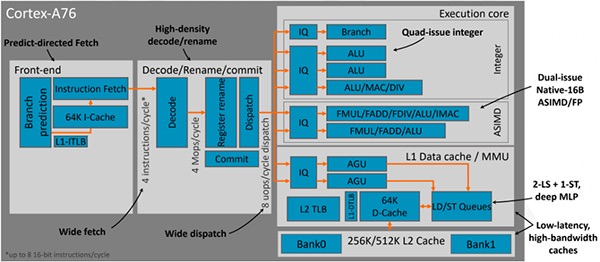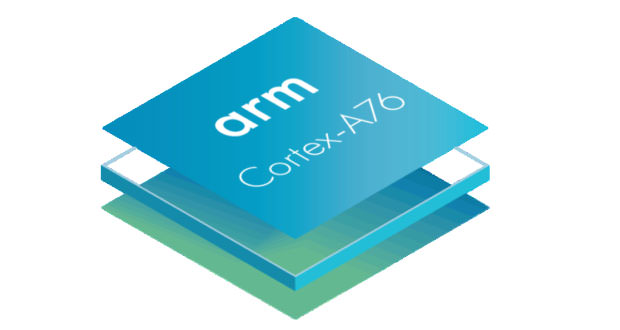ARM Cortex-A76: powerful smartphones like notebooks
The new micro-architecture of ARM is designed to achieve maximum performance within a small form factor.
It changes little in the name compared to its predecessor, but the new ARM architecture represents a fundamental step for the future of the technologies present on practically any Android smartphone. ARM Cortex-A76 is a big step forward in the micro-architecture of mobile platforms in order to improve peak performance and maintain them in the long term within a small form factor. Cortex-A76 is only the first project of the company’s new path that will bring ARM architectures more heavily towards laptops.
With these words, the new chip was announced, which will be compatible with current processors and DynamIQ CPU cluster technology, bringing a 35% performance advantage over today’s Cortex-A75, along with an increase in energy efficiency quantifiable in 40%. Moreover, there are great advantages in the floating-point calculation and for the typical calculations of the machine learning operations, following the current fashion which provides an eye towards artificial intelligence.
 According to ARM with the new technologies it will be possible to achieve a 20% increase in performance every year without compromising the battery life of the devices, and it is precisely this goal that led Microsoft to take an interest in ARM technologies by implementing support on some versions of Windows 10. Moreover, with the future 7-nm production process, the new processor promises operating frequencies above 3 GHz which, thanks to the support of INT8, could deliver a four-fold increase in calculations for machine learning.
According to ARM with the new technologies it will be possible to achieve a 20% increase in performance every year without compromising the battery life of the devices, and it is precisely this goal that led Microsoft to take an interest in ARM technologies by implementing support on some versions of Windows 10. Moreover, with the future 7-nm production process, the new processor promises operating frequencies above 3 GHz which, thanks to the support of INT8, could deliver a four-fold increase in calculations for machine learning.
The performance benefit is also due to the new architecture: Cortex-A76 implements two ALUs, a branch unit and a multi-cycle ALU/MAC/DIV for operations on integers, which are combined with a new 128-bit ASIMD double that doubles the bandwidth compared to the previous architecture. The processor relies on a 64KB L1 cache, a L2 cache of up to 512KB and up to 4MB of shared L3 cache (for the notebook implementation, there should be 2MB on smartphones), with the cache that can benefit of the bandwidth doubled to eliminate any bottlenecks and decrease latency.
Cortex-A76 begins the process of abandoning 32-bit support: there is still compatibility with Aarch32, but only at the lowest level of privileges (EL0), while Aarch64 is supported up to EL3. Based on the requirements of the software ecosystem available, it is likely that ARM will choose to implement only support for 64-bit technologies during the not too distant future.
Together with the new CPU architecture, ARM has also announced the new GPUs and VPUs Mali-G76 and Mali-V76, which are designed to 7-nm compared to the current Mali-G72. ARM promises a 30% higher performance density and 30% better energy efficiency, with the new architecture that uses three execution engines with eight execution lines for core shader, for a total of 20 cores that can be implemented in the package with support for INT8. As regards the new VPU, support for the decoding of 8K video at 60 fps is foreseen, with further benefits for the virtual reality world and increased thanks to the higher powers.

